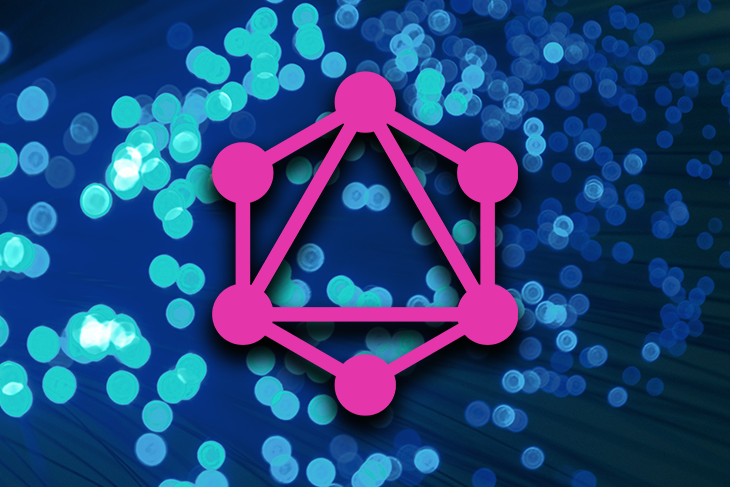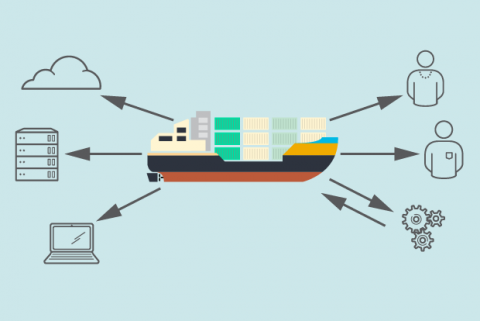Thoughtfully training SRE apprentices: Establishing Padawan and Jedi matches
 Learning via osmosis is very powerful. There is a lot of jargon and technical
terms that are best learned just by hearing others use these terms in context.
For example, if you ask someone who doesn’t work in technology to pronounce
nginx, they will likely say this incorrectly. This is very common for new
engineers too. It’s not a problem, it just means there is a lot to learn which
experienced engineers may take for granted. What if you asked a group of people
who don’t work in technology to spell nginx? I’m sure you’d get many different
answers. How does this change in a remote world? Really, it’s the same. You’ll
still be attending meetings and hearing new terms, you can still attend standup,
and you can still continue to google the terms you don’t know to build your
vocabulary. For example, imagine you are in a meeting on the topic of incident
management and you are reviewing metrics as a team. As a new SRE apprentice you
might wonder, what does MTTD mean? If you hear or see this term in a meeting you
can quickly google it and learn on the job.
Learning via osmosis is very powerful. There is a lot of jargon and technical
terms that are best learned just by hearing others use these terms in context.
For example, if you ask someone who doesn’t work in technology to pronounce
nginx, they will likely say this incorrectly. This is very common for new
engineers too. It’s not a problem, it just means there is a lot to learn which
experienced engineers may take for granted. What if you asked a group of people
who don’t work in technology to spell nginx? I’m sure you’d get many different
answers. How does this change in a remote world? Really, it’s the same. You’ll
still be attending meetings and hearing new terms, you can still attend standup,
and you can still continue to google the terms you don’t know to build your
vocabulary. For example, imagine you are in a meeting on the topic of incident
management and you are reviewing metrics as a team. As a new SRE apprentice you
might wonder, what does MTTD mean? If you hear or see this term in a meeting you
can quickly google it and learn on the job. Blockchain applications that will change the world in the next 5 years
 Decentralized finance (DeFi) is another increasingly blossoming application of
blockchain technology that is set to gain significant momentum in the next 5
years. In Q1 2021, the dollar value of assets under management by DeFi
applications grew from roughly $20 billion to $50 billion. DeFi is a form of
finance that removes central financial intermediaries, like banks, to offer
traditional financial instruments that utilize smart contracts on blockchains.
An example of DeFi in action is the plethora of new decentralized applications
now offering easier access to digital loans — users can bypass strict
requirements of banks and engage in peer-to-peer lending with other people
around the world. The next five years are vital for DeFi and will see dramatic
growth in its applications, regulatory compliance associated with the technology
and its overall use. Celebrity investor Mark Cuban, who gained notoriety in the
blockchain industry through his advocation of NFTs, has suggested that “banks
should be scared” of DeFi’s rising popularity.
Decentralized finance (DeFi) is another increasingly blossoming application of
blockchain technology that is set to gain significant momentum in the next 5
years. In Q1 2021, the dollar value of assets under management by DeFi
applications grew from roughly $20 billion to $50 billion. DeFi is a form of
finance that removes central financial intermediaries, like banks, to offer
traditional financial instruments that utilize smart contracts on blockchains.
An example of DeFi in action is the plethora of new decentralized applications
now offering easier access to digital loans — users can bypass strict
requirements of banks and engage in peer-to-peer lending with other people
around the world. The next five years are vital for DeFi and will see dramatic
growth in its applications, regulatory compliance associated with the technology
and its overall use. Celebrity investor Mark Cuban, who gained notoriety in the
blockchain industry through his advocation of NFTs, has suggested that “banks
should be scared” of DeFi’s rising popularity. The remote-working challenge: ‘There are huge issues’
 From an employees’ perspective “WFH (Working From Home) has the potential to
reduce commute time, provide more flexible working hours, increase job
satisfaction, and improve work-life balance,” a recent study by the University
of Chicago entitled Work from home & productivity: evidence from personnel
& analytics data on IT professionals noted. That’s the theory, but it
doesn’t always work out like that. The researchers tracked the activity of more
than 10,000 employees at an Asian services company between April 2019 and August
2020 and found that they were working 30 per cent more hours than they were
before the pandemic, and 18 per cent more unpaid overtime hours. But there was
no corresponding increase in their workload, and their overall productivity per
hour went down by 20 per cent. Employees with children, predictably perhaps,
were most affected – they worked 20 minutes per day more than those without.
More surprisingly, the employees had less focus time than before the pandemic,
and a lot more meetings. “Time spent on co-ordination activities and meetings
increased, but uninterrupted work hours shrank considerably.
From an employees’ perspective “WFH (Working From Home) has the potential to
reduce commute time, provide more flexible working hours, increase job
satisfaction, and improve work-life balance,” a recent study by the University
of Chicago entitled Work from home & productivity: evidence from personnel
& analytics data on IT professionals noted. That’s the theory, but it
doesn’t always work out like that. The researchers tracked the activity of more
than 10,000 employees at an Asian services company between April 2019 and August
2020 and found that they were working 30 per cent more hours than they were
before the pandemic, and 18 per cent more unpaid overtime hours. But there was
no corresponding increase in their workload, and their overall productivity per
hour went down by 20 per cent. Employees with children, predictably perhaps,
were most affected – they worked 20 minutes per day more than those without.
More surprisingly, the employees had less focus time than before the pandemic,
and a lot more meetings. “Time spent on co-ordination activities and meetings
increased, but uninterrupted work hours shrank considerably.Quantum Computing —What’s it All About
Cluster API Offers a Way to Manage Multiple Kubernetes Deployments
The focus of Cluster API initially is on projects creating tooling and on managed Kubernetes platforms, but in the long run, it will be increasingly useful for organizations that want to build out their own Kubernetes platform, Burns suggested. “It facilitates the infrastructure admin being able to provision a cluster for a user, in an automated fashion or even build the tooling to allow that user to self-service and say ‘hey, I want a cluster’ and press a button and the cluster pops out. By combining Cluster API with something like Logic Apps on Arc, they can come up to a portal, press a button, provision a Kubernetes cluster, get a no-code environment and start building their applications, all through a web browser. ... “We’re maturing to a place where you don’t have to be an expert; where the person who just wants to put together a data source and a little bit of a function transformation and an output can actually achieve all of that in the environment where it needs to run, whether that’s an airstrip, or an oil rig or a ship or factory,” Burns said.Behind the scenes: A day in the life of a cybersecurity expert
 "My biggest challenge is how to determine what we need to work on next," Engel
said. "There's only so much time in the world and you only have so much
manpower. We have so many ideas that we want to execute and deliver to ensure
security and privacy, and we don't like to rest on our laurels. We're not just
going to say, 'oh, this is an eight out of 10, so we don't need to touch it
anymore.' We want to be 10 out of 10 everywhere." As for the fun part,
"analysis on security events is a lot of fun because it's my background," he
said. "I love that kind of thing." While he can't go into details on this,
because of security reasons, it's an around-the-clock job. The automated
systems can contact Engel at any time if something highly critical
occurs—"like having a burglar alarm at your house or something like that," he
said. "Someone's attempting to break-in. And in this example, we are the
police." "A common misconception about cybersecurity is that it's literally
just two people sitting in a dark room waiting for a screen to turn red, and
then they maybe flick a couple buttons," Engel said. "It couldn't be further
from the truth."
"My biggest challenge is how to determine what we need to work on next," Engel
said. "There's only so much time in the world and you only have so much
manpower. We have so many ideas that we want to execute and deliver to ensure
security and privacy, and we don't like to rest on our laurels. We're not just
going to say, 'oh, this is an eight out of 10, so we don't need to touch it
anymore.' We want to be 10 out of 10 everywhere." As for the fun part,
"analysis on security events is a lot of fun because it's my background," he
said. "I love that kind of thing." While he can't go into details on this,
because of security reasons, it's an around-the-clock job. The automated
systems can contact Engel at any time if something highly critical
occurs—"like having a burglar alarm at your house or something like that," he
said. "Someone's attempting to break-in. And in this example, we are the
police." "A common misconception about cybersecurity is that it's literally
just two people sitting in a dark room waiting for a screen to turn red, and
then they maybe flick a couple buttons," Engel said. "It couldn't be further
from the truth."What is DataSecOps and why it matters
Security needs to be bolted into DataOps, not an afterthought. This means building a cross team, ongoing collaboration between security engineering, data engineering and other relevant stakeholders, and not just at the end of a big project. This also means that the security of data stores needs to be understood and transparent to security teams. Number three, in the ever-changing data world, and with limited resources, prioritization is key. You should plan and focus on the biggest risks first. In data that often means knowing where your sensitive data is, which is not so trivial, and prioritizing it much higher in terms of projects and resources. Number four, data access needs to have a clear and simple policy. If things start getting too complicated or non-deterministic around data access permissions, and by non-deterministic, I mean that sometimes you may request access and get it, and sometimes you may not get it, you’re either being a disabler for the business data usage, or you’re exposing security risks.Improving microservice architecture with GraphQL API gateways
 API gateways are nothing new to microservices. I’ve seen many developers use
them to provide a single interface (and protocol) for client apps to get data
from multiple sources. They can solve the problems previously described by
providing a single API protocol, a single auth mechanism, and ensuring that
clients only need to speak to one team when developing new features.Using
GraphQL API gateways, on the other hand, is a relatively new concept that has
become popular lately. This is because GraphQL has a few properties that lend
themselves beautifully to API gateways. GraphQL Mesh will not only act as our
GraphQL API gateway but also as our data mapper. It supports different data
sources, such as OpenAPI/Swagger REST APIs, gRPC APIs, databases, GraphQL
(obviously), and more. It will take these data sources, transform them into
GraphQL APIs, and then stitch them together. To demonstrate the power of a
library like this, we will create a simple SpaceX Flight Journal API. Our app
will record all the SpaceX launches we attended over the years.
API gateways are nothing new to microservices. I’ve seen many developers use
them to provide a single interface (and protocol) for client apps to get data
from multiple sources. They can solve the problems previously described by
providing a single API protocol, a single auth mechanism, and ensuring that
clients only need to speak to one team when developing new features.Using
GraphQL API gateways, on the other hand, is a relatively new concept that has
become popular lately. This is because GraphQL has a few properties that lend
themselves beautifully to API gateways. GraphQL Mesh will not only act as our
GraphQL API gateway but also as our data mapper. It supports different data
sources, such as OpenAPI/Swagger REST APIs, gRPC APIs, databases, GraphQL
(obviously), and more. It will take these data sources, transform them into
GraphQL APIs, and then stitch them together. To demonstrate the power of a
library like this, we will create a simple SpaceX Flight Journal API. Our app
will record all the SpaceX launches we attended over the years. IT modernization: 5 truths now
 Digital transformation got a lot of CIO attention this past year at events
like the MIT Sloan CIO Symposium – and it still isn’t a product or a solution
that anyone can buy. Rather, it’s best described as a continuous process
involving new technologies, ways of working, and adopting a culture of
experimentation. Fostering that culture leads to faster and more
experimentation and the ability to arrive at better outcomes through
continuous improvement. But just because the technology component is often not
front and center (and shouldn’t be) in digital transformation projects doesn’t
mean that a technology toolbox, including a foundational platform, is
unimportant. Anything but. If you look back at some of the words in that
digital transformation definition, it’s easy to see why traditional rigid
platforms often intended to support monolithic long-lived applications might
not fit the bill. Digital transformation is responsible in no small part for
the acceleration of both containerized environments and the consumption of
cloud services.
Digital transformation got a lot of CIO attention this past year at events
like the MIT Sloan CIO Symposium – and it still isn’t a product or a solution
that anyone can buy. Rather, it’s best described as a continuous process
involving new technologies, ways of working, and adopting a culture of
experimentation. Fostering that culture leads to faster and more
experimentation and the ability to arrive at better outcomes through
continuous improvement. But just because the technology component is often not
front and center (and shouldn’t be) in digital transformation projects doesn’t
mean that a technology toolbox, including a foundational platform, is
unimportant. Anything but. If you look back at some of the words in that
digital transformation definition, it’s easy to see why traditional rigid
platforms often intended to support monolithic long-lived applications might
not fit the bill. Digital transformation is responsible in no small part for
the acceleration of both containerized environments and the consumption of
cloud services.Building future-proof tech products and long-lasting customer relationships
 When designing a new product, it is essential to not only look at current
needs, but to anticipate changes in business and in computing models. A
timeless design must include potential for expansion and adaptation as the
industry evolves. Products designed in a non-portable manner are limited to
specific deployment scenarios only, for example on-prem vs. cloud. Of course,
predicting movements in the industry is not easy. Many people bet on storage
tape going away, yet it is still found in many data centres today. Some jumped
on a new trend too soon and failed. And others did not recognise the value in
what they had created. Take Xerox, for example, which created then ignored the
first personal computer. So, how do you go about creating enduring technology
that makes a meaningful difference in people’s lives and businesses? First,
stay close to analysts whose job it is to analyse the market and identify
major trends. And, second, engage in deep conversations with end-users to
truly understand their objectives and challenges. Here, it is essential to
discuss customers’ evolving needs and future projects, then work to create a
product that solves for both the short and long term.
When designing a new product, it is essential to not only look at current
needs, but to anticipate changes in business and in computing models. A
timeless design must include potential for expansion and adaptation as the
industry evolves. Products designed in a non-portable manner are limited to
specific deployment scenarios only, for example on-prem vs. cloud. Of course,
predicting movements in the industry is not easy. Many people bet on storage
tape going away, yet it is still found in many data centres today. Some jumped
on a new trend too soon and failed. And others did not recognise the value in
what they had created. Take Xerox, for example, which created then ignored the
first personal computer. So, how do you go about creating enduring technology
that makes a meaningful difference in people’s lives and businesses? First,
stay close to analysts whose job it is to analyse the market and identify
major trends. And, second, engage in deep conversations with end-users to
truly understand their objectives and challenges. Here, it is essential to
discuss customers’ evolving needs and future projects, then work to create a
product that solves for both the short and long term.Quote for the day:
"I think leadership's always been about two main things: imagination and courage." -- Paul Keating
No comments:
Post a Comment